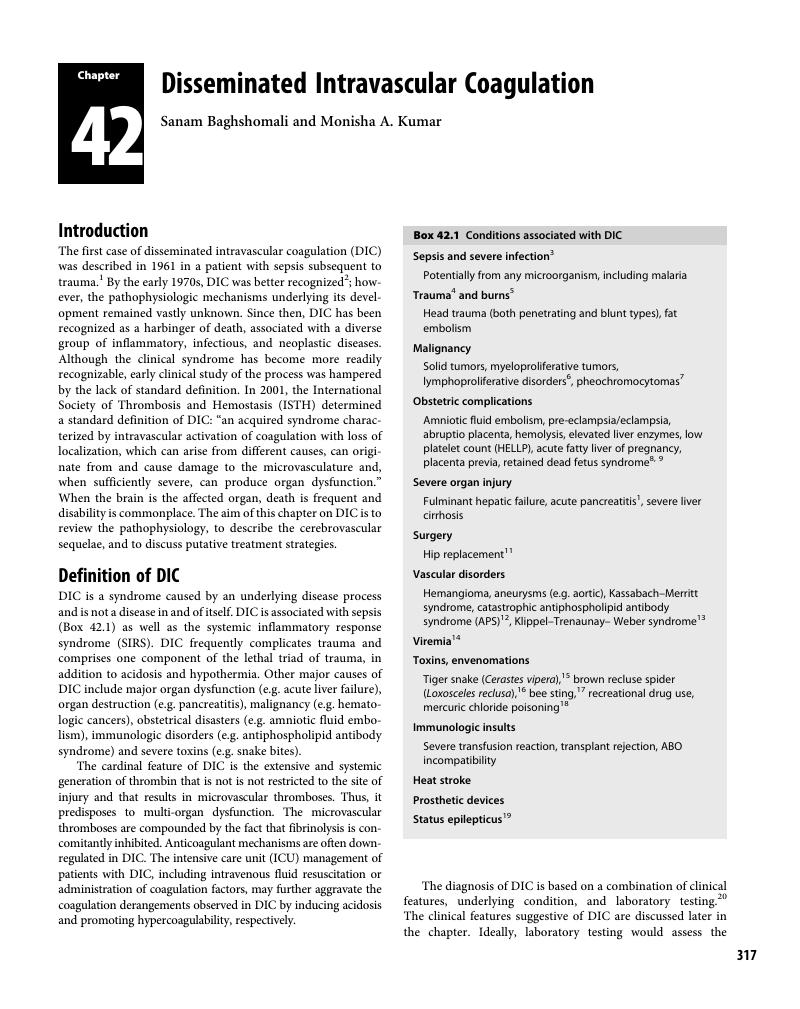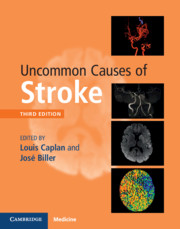Book contents
- Uncommon Causes of Stroke
- Uncommon Causes of Stroke
- Copyright page
- Contents
- Contributors
- Preface
- Section 1 Infectious Conditions
- Section 2 Inflammatory Conditions
- Section 3 Hereditary and Genetic Conditions and Malformations
- Section 4 Vascular Conditions of the Eyes, Ears, and Brain
- Section 5 Disorders Involving Abnormal Coagulation
- Chapter 41 Antiphospholipid Antibody Syndrome
- Chapter 42 Disseminated Intravascular Coagulation
- Chapter 43 Bleeding Disorders
- Chapter 44 Thrombophilias
- Chapter 45 Thrombotic Thrombocytopenic Purpura
- Chapter 46 Cerebrovascular Complications of Henoch–Schönlein Purpura
- Section 6 Systemic Disorders That Also Involve the Cerebrovascular System
- Section 7 Non-Inflammatory Disorders of the Arterial Wall
- Section 8 Venous Occlusive Conditions
- Section 9 Vasospastic Conditions and Other Miscellaneous Vasculopathies
- Index
- Plate Section (PDF Only)
- References
Chapter 42 - Disseminated Intravascular Coagulation
from Section 5 - Disorders Involving Abnormal Coagulation
Published online by Cambridge University Press: 15 June 2018
- Uncommon Causes of Stroke
- Uncommon Causes of Stroke
- Copyright page
- Contents
- Contributors
- Preface
- Section 1 Infectious Conditions
- Section 2 Inflammatory Conditions
- Section 3 Hereditary and Genetic Conditions and Malformations
- Section 4 Vascular Conditions of the Eyes, Ears, and Brain
- Section 5 Disorders Involving Abnormal Coagulation
- Chapter 41 Antiphospholipid Antibody Syndrome
- Chapter 42 Disseminated Intravascular Coagulation
- Chapter 43 Bleeding Disorders
- Chapter 44 Thrombophilias
- Chapter 45 Thrombotic Thrombocytopenic Purpura
- Chapter 46 Cerebrovascular Complications of Henoch–Schönlein Purpura
- Section 6 Systemic Disorders That Also Involve the Cerebrovascular System
- Section 7 Non-Inflammatory Disorders of the Arterial Wall
- Section 8 Venous Occlusive Conditions
- Section 9 Vasospastic Conditions and Other Miscellaneous Vasculopathies
- Index
- Plate Section (PDF Only)
- References
Summary

- Type
- Chapter
- Information
- Uncommon Causes of Stroke , pp. 317 - 327Publisher: Cambridge University PressPrint publication year: 2018
References
- 1
- Cited by



